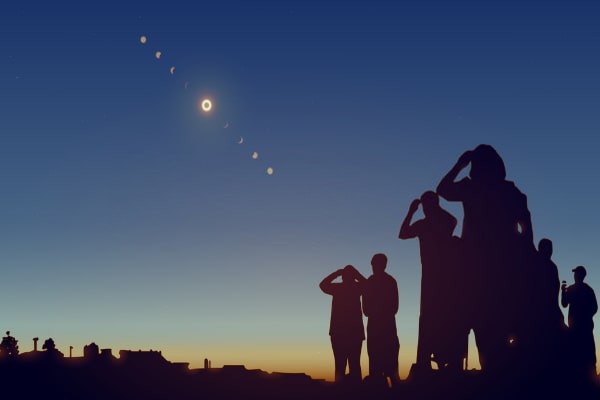Most people remember the excitement that surrounded a pending eclipse in the elementary school years. Teachers help students craft viewing devices in science class and repeatedly warn them not to look at the phenomenon directly. Younger students may have to remain indoors with the window shades shut until the eclipse is over. Either way, the buzz of the eclipse usually spread around the school, leaving students excited about the event. Part of this excitement came from the fact that an eclipse is considered a special event. They do not happen every day. We often wait for the news channel to tell us when they are coming. An interesting part of our universe is the cause and frequency of eclipses.
Timing
Eclipses may be considered a rare occurrence, but this is not the case. We may just not be aware of each one. They actually happen about every 18 months. On Earth, we are usually able to see a total solar eclipse. These are visible from certain areas of the planet. They may not be visible to everyone each time. The timing of orbits and the shape of the path have a lot to do with when total solar eclipses occur. You may not see an eclipse often due to the area you live in, while other areas may see one even sooner than the 18-month time span. Many areas on the globe can go hundreds of years without the visibility of an eclipse.
Distance
The moon resides about 234,900 miles away from the Earth. This distance, however, can vary due to the elliptical orbit. At times it may only be 217,730 miles away. This distance allows for the moon to appear smaller than the sun when it passes. This leaves the telltale ring of light around the moon when the moon and sun are lined up. Dallas, Texas, for instance, is due to see a total eclipse in the year 2024. It has not seen a total eclipse since October of 1623. The distance and placement of the moon changes on the orbit, changing the visibility.
Prediction
Scientists use many details about the movement of the sun and moon to determine when the next eclipse is going to be. Other than orbits of the moon and Earth, detailed geographical coordinates are a necessity. Evidence of early prediction attempts is available from about the year A.D. 150. The work of Claudius Ptolemy shows some rough ideas of this prediction process. Early medieval documents also show diagrams of solar eclipses. Friedrich Bessel, a Prussian scientist, made great strides in simplifying the prediction process. In the year 1824, he came up with a series of formulas that are still used to today. The “Besselian Elements” use various calculations to determine the placement of the moon, sun, and the Earth.
Calculations
The distance of earth from the moon is ever changing. The path of totality differs during each eclipse. This is the area of the Earth that has visibility. This can even change during the action of the eclipse. The “fundamental plane” is referred to often when predictions of these events are underway. This plane is a reference point that rests perpendicular to the moon-sun line, and also passes through center of the Earth. Advanced geometry and trigonometry is used to determine the timing of intersection of the rotating Earth and the moons dark shadow. The axis of the shadow of the moon has a path that falls in almost a perfectly straight line across the fundamental plane. This is taken into consideration, as well. Modern computer use has made these calculations much easier to process.
The viewing of an eclipse can be a memorable part of our lives. It is a chance to witness the wonder that exists out in the universe. The sun, moon, and other planets all offer a variety of opportunities for study and casual viewing. A total eclipse may happen, but not be visible from your location on planet Earth. The orbit of the moon and rotation of the earth have a lot to do with this. Many scientists travel the world to see these events and further their studies of them. Take the chance to view a complete eclipse when it comes your way, it may be hundreds of years before another one is accessible to you.








Leave a Comment